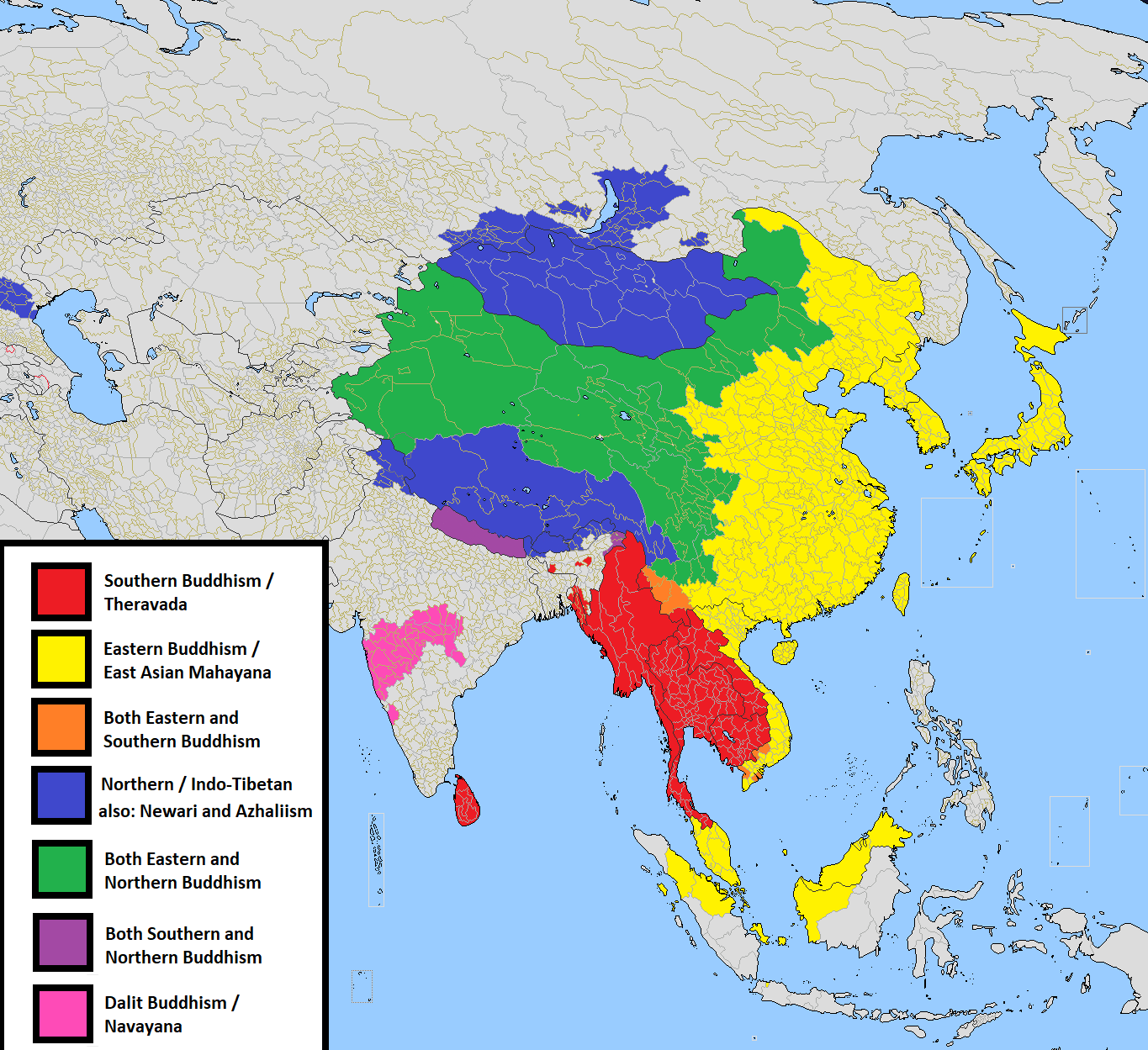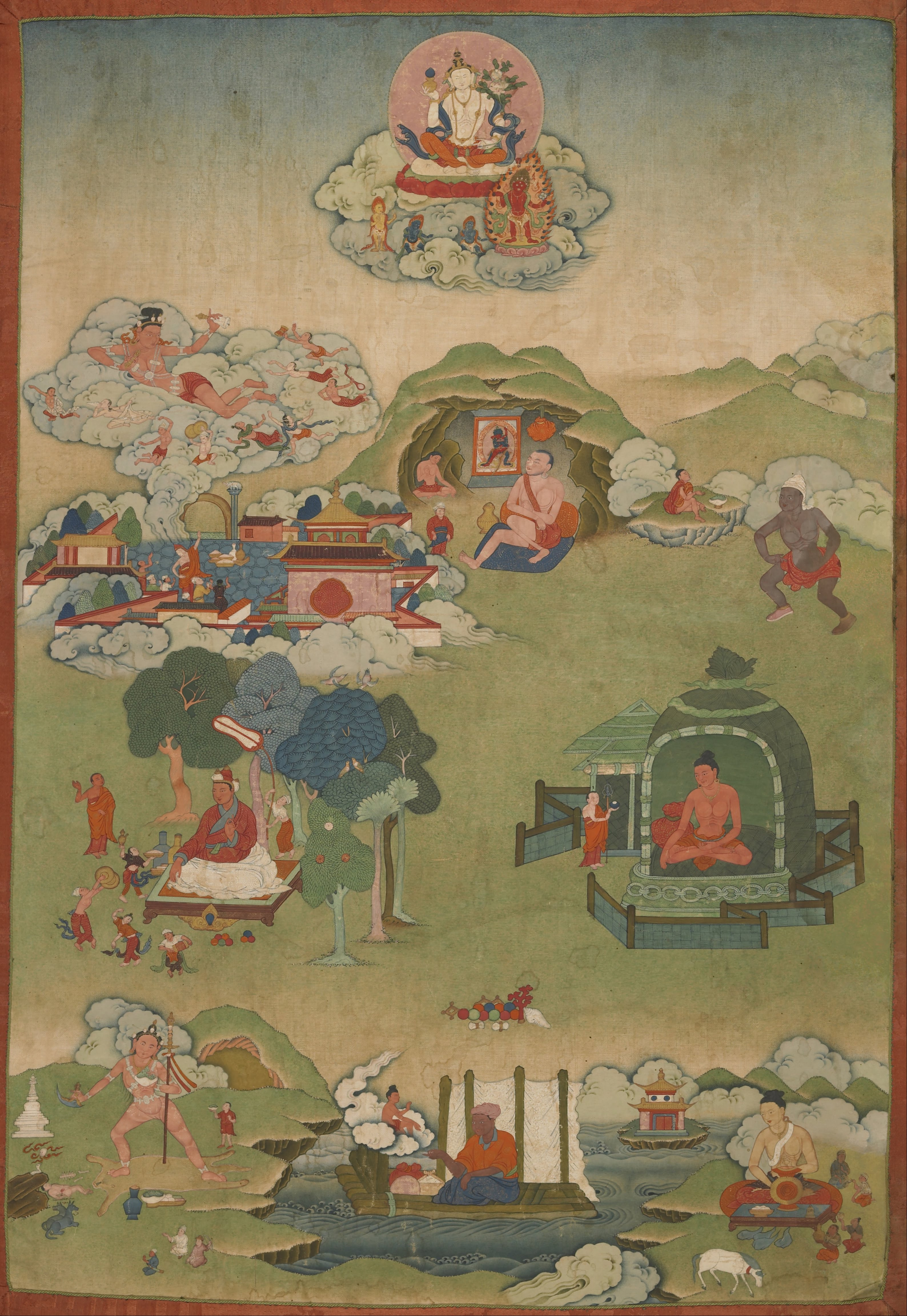|
Skillful Means
Upaya (Sanskrit: उपाय, , ''expedient means'', ''pedagogy'') is a term used in Buddhism to refer to an aspect of guidance along the Buddhist paths to liberation where a conscious, voluntary action "is driven by an incomplete reasoning" about its direction. Upaya is often used with ''kaushalya'' (कौशल्य, "cleverness"), ''upaya-kaushalya'' meaning "skill in means". Upaya-kaushalya is a concept emphasizing that practitioners may use their own specific methods or techniques that fit the situation in order to gain enlightenment. The implication is that even if a technique, view, etc., is not ultimately "true" in the highest sense, it may still be an ''expedient'' practice to perform or view to hold; i.e., it may bring the practitioner closer to the true realization in a similar way. The exercise of skill to which it refers, the ability to adapt one's message to the audience, is of enormous importance in the Pali Canon. The Digital Dictionary of Buddhism notes th ... [...More Info...] [...Related Items...] OR: [Wikipedia] [Google] [Baidu] |
Arthashastra
The ''Arthashastra'' ( sa, अर्थशास्त्रम्, ) is an Ancient Indian Sanskrit treatise on statecraft, political science, economic policy and military strategy. Kautilya, also identified as Vishnugupta and Chanakya, is traditionally credited as the author of the text.: "References to the work in other Sanskrit literature attribute it variously to , and . The same individual is meant in each case. The '' Pańcatantra'' explicitly identifies Chanakya with ." The latter was a scholar at Takshashila, the teacher and guardian of Emperor Chandragupta Maurya. Some scholars believe them to be the same person, while a few have questioned this identification.; : "while in his character as author of an ''arthaśāstra'' he is generally referred to by his '' gotra'' name, ;": "T. Burrow... has now shown that Cāṇakya is also a ''gotra'' name, which in conjunction with other evidence makes it clear that we are dealing with distinct persons, the minister Cāṇaky ... [...More Info...] [...Related Items...] OR: [Wikipedia] [Google] [Baidu] |
Dharma
Dharma (; sa, धर्म, dharma, ; pi, dhamma, italic=yes) is a key concept with multiple meanings in Indian religions, such as Hinduism, Buddhism, Jainism, Sikhism and others. Although there is no direct single-word translation for ''dharma'' in European languages, it is commonly translated as "righteousness", "merit" or "religious and moral duties" governing individual conduct.Britannica, The Editors of Encyclopaedia. (9 April 2019)Dharma. ''Encyclopedia Britannica''. Accessed 14 September 2021. In Hinduism, dharma is one of the four components of the ''Puruṣārtha'', the aims of life, and signifies behaviours that are considered to be in accord with '' Ṛta'', the order that makes life and universe possible. It includes duties, rights, laws, conduct, virtues and "right way of living".see: *"Dharma", ''The Columbia Encyclopedia'', 6th Ed. (2013), Columbia University Press, Gale, ; *Steven Rosen (2006), Essential Hinduism, Praeger, , Chapter 3. It had a transtempor ... [...More Info...] [...Related Items...] OR: [Wikipedia] [Google] [Baidu] |
Mahayana
''Mahāyāna'' (; "Great Vehicle") is a term for a broad group of Buddhist traditions, texts, philosophies, and practices. Mahāyāna Buddhism developed in India (c. 1st century BCE onwards) and is considered one of the three main existing branches of Buddhism (the other being ''Theravāda'' and Vajrayana).Harvey (2013), p. 189. Mahāyāna accepts the main scriptures and teachings of early Buddhism but also recognizes various doctrines and texts that are not accepted by Theravada Buddhism as original. These include the Mahāyāna Sūtras and their emphasis on the ''bodhisattva'' path and ''Prajñāpāramitā''. ''Vajrayāna'' or Mantra traditions are a subset of Mahāyāna, which make use of numerous tantric methods considered to be faster and more powerful at achieving Buddhahood by Vajrayānists. "Mahāyāna" also refers to the path of the bodhisattva striving to become a fully awakened Buddha (''samyaksaṃbuddha'') for the benefit of all sentient beings, and is thus als ... [...More Info...] [...Related Items...] OR: [Wikipedia] [Google] [Baidu] |
Schools Of Buddhism
The schools of Buddhism are the various institutional and doctrinal divisions of Buddhism that have existed from ancient times up to the present. The classification and nature of various doctrinal, philosophical or cultural facets of the schools of Buddhism is vague and has been interpreted in many different ways, often due to the sheer number (perhaps thousands) of different sects, subsects, movements, etc. that have made up or currently make up the whole of Buddhist traditions. The sectarian and conceptual divisions of Buddhist thought are part of the modern framework of Buddhist studies, as well as comparative religion in Asia. From a largely English-language standpoint, and to some extent in most of Western academia, Buddhism is separated into two groups: Theravāda, literally "the Teaching of the Elders" or "the Ancient Teaching," and Mahāyāna, literally the "Great Vehicle." The most common classification among scholars is threefold: Theravāda, Mahāyāna and Vajrayāna. ... [...More Info...] [...Related Items...] OR: [Wikipedia] [Google] [Baidu] |
Yana (Buddhism)
Yāna (Sanskrit: यान and Pāli: "vehicle") refers to a mode or method of spiritual practice in Buddhism. It is claimed they were all taught by the Gautama Buddha in response to the various capacities of individuals. On an outwardly conventional level, the teachings and practices may appear contradictory, but ultimately they all have the same goal. Nomenclature, etymology and orthography In form, yāna is a neuter noun derived from the Sanskrit root yā- meaning to "go to" or "move" or "reach". The suffix employed to form this noun may have different values: while primarily yāna is understood to refer to the means (kara.na) through which one goes to/ reaches a location, it may technically also refer to the action itself (bhāva). Yāna is therefore primarily a "vehicle", in most contexts relevant to the Buddhist doctrine of three yānas. "Vehicle" is often used as a preferred translation as the word that provides the least in the way of presuppositions about the mode of t ... [...More Info...] [...Related Items...] OR: [Wikipedia] [Google] [Baidu] |
White Lie
A lie is an assertion that is believed to be false, typically used with the purpose of deception, deceiving or Deception, misleading someone. The practice of communicating lies is called lying. A person who communicates a lie may be termed a liar. Lies can be interpreted as deliberately false statements or misleading statements. Lies may also serve a variety of instrumental, interpersonal, or psychological functions for the individuals who use them. Generally, the term "lie" carries a negative connotation, and depending on the context a person who communicates a lie may be subject to social, legal, religious, or criminal sanctions; for instance, perjury, or the act of lying under oath, can result in criminal and civil charges being pressed against the perjurer. Although people in many cultures believe that deception can be detected by observing nonverbal behaviors (e.g. not making eye contact, fidgeting, stuttering) research indicates that people overestimate both the signific ... [...More Info...] [...Related Items...] OR: [Wikipedia] [Google] [Baidu] |
Buddhist Texts
Buddhist texts are those religious texts which belong to the Buddhist tradition. The earliest Buddhist texts were not committed to writing until some centuries after the death of Gautama Buddha. The oldest surviving Buddhist manuscripts are the Gandhāran Buddhist texts, found in Afghanistan and written in Gāndhārī, they date from the first century BCE to the third century CE. The first Buddhist texts were initially passed on orally by Buddhist monastics, but were later written down and composed as manuscripts in various Indo-Aryan languages (such as Pāli, Gāndhārī, and Buddhist Hybrid Sanskrit) and collected into various Buddhist Canons. These were then translated into other languages such as Buddhist Chinese (''fójiào hànyǔ'' 佛教漢語) and Classical Tibetan as Buddhism spread outside of India. Buddhist texts can be categorized in a number of ways. The Western terms "scripture" and "canonical" are applied to Buddhism in inconsistent ways by West ... [...More Info...] [...Related Items...] OR: [Wikipedia] [Google] [Baidu] |
Vajrayana
Vajrayāna ( sa, वज्रयान, "thunderbolt vehicle", "diamond vehicle", or "indestructible vehicle"), along with Mantrayāna, Guhyamantrayāna, Tantrayāna, Secret Mantra, Tantric Buddhism, and Esoteric Buddhism, are names referring to Buddhism, Buddhist traditions associated with Tantra and "Secret Mantra", which developed in the Medieval India, medieval Indian subcontinent and spread to Tibet, Nepal, other Himalayan states, East Asia, and Mongolia. Vajrayāna practices are connected to specific lineages in Buddhism, through the teachings of lineage holders. Others might generally refer to texts as the Buddhist Tantras. It includes practices that make use of mantras, dharanis, mudras, mandalas and the visualization of deities and Buddhas. Traditional Vajrayāna sources say that the tantras and the lineage of Vajrayāna were taught by Gautama Buddha, Śākyamuni Buddha and other figures such as the bodhisattva Vajrapani and Padmasambhava. Contemporary historians of Bu ... [...More Info...] [...Related Items...] OR: [Wikipedia] [Google] [Baidu] |
Mahasiddha
Mahasiddha (Sanskrit: ''mahāsiddha'' "great adept; ) is a term for someone who embodies and cultivates the " siddhi of perfection". A siddha is an individual who, through the practice of sādhanā, attains the realization of siddhis, psychic and spiritual abilities and powers. Mahasiddhas were practitioners of yoga and tantra, or ''tantrika''s. Their historical influence throughout the Indian subcontinent and the Himalayas was vast and they reached mythic proportions as codified in their songs of realization and hagiographies, or namtars, many of which have been preserved in the Tibetan Buddhist canon. The Mahasiddhas are the founders of Vajrayana traditions and lineages such as Dzogchen and Mahamudra. Robert Thurman explains the symbiotic relationship between Tantric Buddhist communities and the Buddhist universities such as Nalanda which flourished at the same time. Genealogy and historical dates The exact genealogy and historical dates of the Mahasiddhas are contentiou ... [...More Info...] [...Related Items...] OR: [Wikipedia] [Google] [Baidu] |






_(8697431158).jpg)
